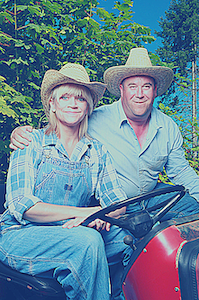Lost crops
January 2023
If you travel back in time 100,000 years, you’ll find humans with brains just like ours, doing most of the same human things we do. With one important exception: Nobody’s a farmer.
Humans lived on earth for hundreds of thousand of years before anybody settled down to work the same plot of land, year after year, in order to feed themselves.
Fast forward to the present, and just two crops—corn and soy—account for over half of total agricultural revenue in the US.
What happened inbetween?
The further back we go, the less we know. But positioned tantalizingly at the very boundary of what records we do have are a handful of so-called “lost crops.”
Goosefoot. Sumpweed. Maygrass. Knotweed.
These plants still exist, still grow in the wild, and archaeological records indicate they used to be under active cultivation. For thousands of years! By humans with brains just like us, who eventually decided to focus on corn.
I love corn. And at the same time, I’m not sure the move toward growing one staple crop for almost all of our nutritional requirements … was the right move. I suspect that a wider variety of plants, each with a thousands-of-years track record, might be a better way to feed ourselves in the future.
Better as in “stabler,” and better as in “more fun.”
This is why I’ve started a nursery.
If you’re also fascinated by lost crops, why not try growing one? Get in touch and let me know you’re interested, and I’ll send you some seeds this fall. Or stop in for a visit this spring, and I’ll send you home with a seedling.
